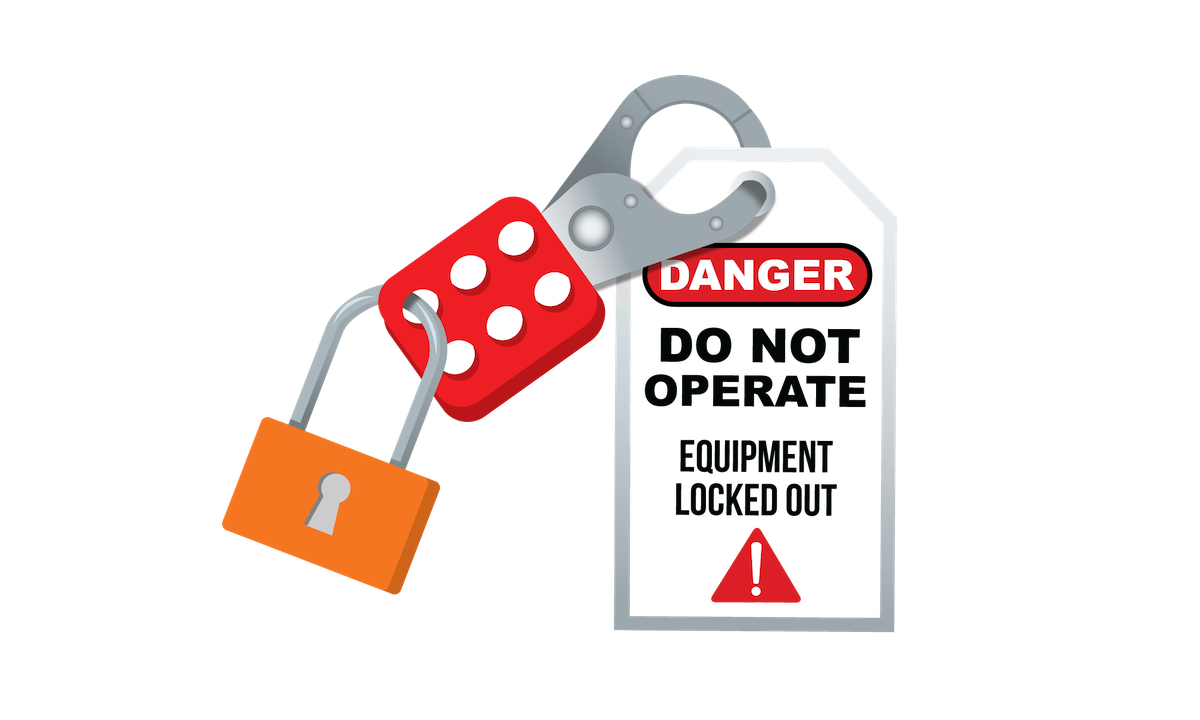Working in Confined Spaces
Languages: English
Media Editing: This subject does not contain any editable media.
Description: The leading cause of death in confined-space accidents is asphyxiation, and of those deaths, 60% of them are would-be rescuers. Confined-Space Entry teaches learners how to identify the hazards associated with confined-space entry, how to properly prepare the space and themselves before entering, how to make sure the space is properly ventilated while work is happening. Finally, in case of emergency, this subject also teaches learners what they need to know to help a co-worker who needs to be rescued from the space. Content is intended to complement your company's written confined space policies/program and supplement or refresh OSHA training requirements.
Languages: English
Media Editing: This subject does not contain any editable media.
Description: The leading cause of death in confined-space accidents is asphyxiation, and of those deaths, 60% of them are would-be rescuers. Confined-Space Entry teaches learners how to identify the hazards associated with confined-space entry, how to properly prepare the space and themselves before entering, how to make sure the space is properly ventilated while work is happening. Finally, in case of emergency, this subject also teaches learners what they need to know to help a co-worker who needs to be rescued from the space. Content is intended to complement your company's written confined space policies/program and supplement or refresh OSHA training requirements.
Languages: English
Media Editing: This subject does not contain any editable media.
Description: The leading cause of death in confined-space accidents is asphyxiation, and of those deaths, 60% of them are would-be rescuers. Confined-Space Entry teaches learners how to identify the hazards associated with confined-space entry, how to properly prepare the space and themselves before entering, how to make sure the space is properly ventilated while work is happening. Finally, in case of emergency, this subject also teaches learners what they need to know to help a co-worker who needs to be rescued from the space. Content is intended to complement your company's written confined space policies/program and supplement or refresh OSHA training requirements.
Topics
What is a Confined Space and the Hazards?
-
This topic introduces the learner to the concept, and definition of a confined work space. The learner is also taught about some of the most common types of hazards associated with confined-space work.
-
Questions (level 1, 2, 3)
-
This topic is currently available in English.
-
Research shows that lack of oxygen, known as asphyxiation, is the leading cause of death in confined-space accidents.
A confined space is an enclosed area that is still large enough for a person to enter/exit and work inside. (ex: tanks, silos, storage bins, vaults, manholes, tunnels, ducts, etc.)
A confined space is not designed for continuous work or occupancy and has few or restricted ways to enter or exit. Ex: tanks, vessels, silos, storage bins, duct work, vaults, pits, manholes, tunnels, pipelines
Most common confined-space hazards are:
- atmosphere hazards (poor ventilation, toxic gas build-up)
- dangerous configuration hazards
- engulfment hazards (crush, suffocate, or drown you)
- mechanical or electrical hazards
Atmosphere hazards can be when there is too much or too little oxygen, when there are flammable or explosive agents, or when the space contains toxic elements that can threaten a person’s life or their ability to escape.
Only someone with the proper training, equipment, and experience should enter and work in a confined space.
Proper safety protocols and procedures must be followed by each confined-space worker, each time the space is entered, regardless of how many times the space has been entered.
Preview of topic image for “What is a Confined Space and the Hazards?” as this topic is questions only.
Confined-Space Hazards Defined
-
This topic dives deeper into various types of confined-space entry hazards. It focuses on: atmospheric, engulfment, toxic, flammable/explosive and mechanical hazards and their implication and Immediately Dangerous to Life and Health(IDLH) atmospheres
-
Questions (level 1, 2, 3)
-
This topic is currently available in English.
-
This topic is currently available in English.
When the space doesn’t have enough oxygen to breathe, it’s classified as an asphyxiating atmosphere. Oxygen concentration must be between 19.5% and 23.5% of the total atmosphere.
Toxic atmospheres include gases, vapors, or fumes that give off toxic gases. (ex: sludge cleaned from the inside a tunnel can emit toxic fumes. Welding can create toxic vapor.)
In addition to possible health effects, toxic atmospheres can also impair a worker’s ability to self-escape the confined space. (Carbon monoxide can make you too sleepy, or Hydrogen Sulfide, which smells like rotten eggs, interrupts your sense of smell, so eventually you can’t smell it, giving you a false sense of security, even though it’s causing serious bodily harm.)
An Immediately Dangerous to Life or Health (IDLH) atmosphere is an atmosphere that is likely to cause death or immediate or delayed permanent adverse health effects or prevent escape from such an environment.
Before entering an IDLH atmosphere, the entrant must have and wear the appropriate breathing equipment. Ex: Self-contained breathing apparatus or airline respirator.
A flammable atmosphere has flammable liquids, gases, or combustible dust in air, which could catch fire or explode.
A confined-space entrant can become oxygen-deprived when they’re in a space with converging walls or where the floors slope downward to a tapered area, like the coned bottom of a silo.
Engulfment happens when someone sinks into the material contained in a confined space and suffocates or is crushed.
A mechanical hazard is a physical hazard, such as rotating machinery, unguarded machinery, electrical equipment or material which can engulf an entrant. Always lockout and tag equipment.
Preview of topic image for “Confined-Space Hazards Defined” as this topic is questions only.
Confined-Space Entry Permits
-
Due to the nature and danger of some confined spaces, sometimes a special entry permit is required. This topic teaches learners when an entry permit is needed, why they are required, and what kind of information must be included on the permit.
-
Questions (level 1, 2, 3)
-
This topic is currently available in English.
-
The entry permit identifies the measures and procedures that need to be followed for the confined-space entry. It identifies the people involved, the potential hazards, what kinds of controls are required, etc.
Work cannot continue past the authorized duration period listed on the entry permit. If additional work needs to be completed after this time period has passed, a new entry permit is required.
The confined-space entry permit lists all of the people involved in the confined-space entry operation, including: the signing supervisor, the authorized entrant(s), the entry attendant(s), the rescuers, etc. It also lists the roles and responsibilities of each person.
The entry permit lists the name and location of the confined space that needs to be worked in, as well the reasons the work is required.
The entry permit lists and describes any hazards in the confined space, as well as the acceptable entry conditions.
The entry permit lists the results of all tests carried out on the space and includes the initials or signature of the tester.
The entry permit lists the personal protective equipment (PPE) and safety equipment you must use.
The entry permit details the communication procedures and equipment required to facilitate communication between the confined-space entrants and the entry attendants.
The entry permit includes details of the necessary rescue procedures, including how to contact the confined-space rescuers.
The entry permit includes additional permits that have been issued to authorize specific work being completed in the space, like hot work.
The entry permit lists the date(s) and the authorized duration period of entry to the confined space.
Preview of topic image for “Confined-Space Entry Permits” as this topic is questions only.
Confined-Space Entry Preparation
-
Once the hazards of a confined space are identified, precautions must be taken. This topic teaches different types of procedures to follow for certain types of hazards. For example: when to do a lockout/tagout, when to purge or inert a space and more
-
Questions (level 1, 2, 3)
-
This topic is currently available in English.
-
A Lockout/Tagout (LOTO) procedure must always be done before entering a confined space that has potential mechanical hazards. This helps to keep the entrants safe from accidental machine start-ups.
If a confined space is connected to a chemical hazard or other materials through a pipe or line, disconnect and offset the line, close and lock the valves, or insert blanks.
Before entering a confined space, check the entry permit to find out the hazards inside the space, the equipment you must use, and the acceptable entry conditions.
If a confined space has an explosive atmosphere, you must purge or inert the space. This process can take a few days to complete, and inertion creates a low oxygen atmosphere that will require entrants to use self-contained air-respirators.
It is sometimes necessary to clean a tank or vessel of residues, chemicals or fuels. Use the appropriate cleaning method, such as solvents, detergents or steam.
A trained and experienced person needs to conduct atmospheric testing of the confined space before anyone enters.
The type of work being done in a confined space determines how frequently you monitor the air quality. Certain work, like painting, shielded gas welding, or cleaning can change air quality in the space and create a hazard, even if one didn’t exist before.
For spaces that require continuous air monitoring, use a continuous reading personal monitoring device.
Entrants must use personal protective equipment (PPE), like contained breathing apparatuses, airline respirators, gloves, suits, etc. if atmospheric hazards are present. (Atmospheric hazards can still be present even after ventilating the space.)
Preview of topic image for “Confined-Space Entry Preparation” as this topic is questions only.
Confined-Space Ventilation
-
Learners are taught two main strategies for properly ventilating a hazardous atmosphere in a confined space: general ventilation (supply ventilation) and exhaust ventilation. It also provides examples for when and why to use each ventilation type.
-
Questions (level 1, 2, 3)
-
This topic is currently available in English.
-
Blowers or fans can be used for ventilation to help control hazardous atmospheres that are toxic, combustible, or asphyxiating.
Ventilation is used to provide fresh oxygen to the confined space and to remove any airborne materials that could be toxic or flammable.
The two most common methods of ventilation are: general or supply ventilation and exhaust ventilation.
General ventilation, also referred to as supply ventilation, moves fresh air into a space, forcing the hazardous air out. This and reduces the number of contaminants in the air to safer levels.
When using general or supply ventilation, always make sure the air intake component is upwind of the confined space opening, and that the exhausted air is not being pumped back into the space.
Exhaust ventilation captures contaminated air, and pulls it out of the space, decreasing the air pressure which allows fresh air to be drawn in.
Since exhaust ventilation doesn't produce the air movement required to decrease the number of contaminants in the air, it isn't as effective as general/supply ventilation. It is useful in situations where there's a contaminant being generated within the space, or in dusty areas, as it doesn't disturb the air in the space.
Duct configuration affects the effectiveness of air blowers; long or winding duct runs make moving air out of a space more difficult.
The hose of the exhaust ventilation system needs to be close to the source of the air contamination. Make sure to monitor that the contaminated air isn’t being pulled back into the space.
Continuously monitor the air quality in the confined space. A significant number of confined-space fatalities happen in spaces that started off ‘hazard-free’.
Preview of topic image for “Confined-Space Ventilation” as this topic is questions only.
Confined-Space Entry: The Entry Attendant and the Entrant
-
This topic teaches learners about the roles of an entrant and attendant. This includes the responsibilities of each role, like: what kind of training is required to be a qualified attendant/entrant, the importance of communication and more.
-
Questions (1, 2, 3)
-
This topic is currently available in English.
-
The confined-space entrant and the entry attendant are the people involved in the confined-space entry procedure.
The entry attendant is a highly-trained in confined-space hazards, entry processes, rescue procedures, etc.
The entry attendant is responsible for monitoring and evacuating the entrants if necessary.
The entry attendant and the entrant must be in constant communication, either visually (by phone) or through two-way radio.
The entry attendant must not leave the confined space for any reason, unless another entry attendant relieves them.
The entry attendant must always know exactly how many entrants are in the confined space at any time, and they must make sure to pass accurate numbers along to whomever relieves them or to rescuers, if necessary, so they know all entrants have successfully exited the space.
Both the entry attendant and the entrant must be trained to recognize the various types of confined-space hazards and the effects or symptoms of exposure to those hazards.
The entry attendant must know how and when to call for assistance or for rescuers and what kind of information to provide.
Confined-space entrants must be trained to use all necessary and relevant equipment safely; incompetent or incorrect machine operations can compromise their safety while in the confined space.
The entrant must let the entry attendant know as soon as they suspect there might be a hazard or problem, or if they feel the signs of overexposure.
Preview of topic image for “Confined-Space Entry: The Entry Attendant and the Entrant” as this topic is questions only.
Confined-Space Entry: The Rescuer
-
This topic teaches learners about the skills and training to perform a rescue in a confined space, how to call rescuers, when to call emergency medical services (EMS), when NOT to, and some of the risks associated with confined-space rescues.
-
Questions (levels 1, 2, 3)
-
This topic is currently available in English.
-
A confined-space rescuer must be trained in all types of rescues and know under which circumstances to use a specific type of rescue.
People who attempt a confined-space rescue without the proper training can easily die in the process, usually of oxygen deprivation.
Confined-space rescues can be classified into three main categories: self-rescue, non-entry rescue, and entry-rescue.
A self-rescue is when the entrant is able to evacuate themselves from the confined space.
A non-entry rescue happens when rescuers are able to evacuate the entrant without entering the confined space. This is usually done with the help of a body harness retrieval line.
For a rescue using a retrieval line, there must be clear access from the opening of the confined space to where the entrant is located.
An entry rescue happens when the trained rescuer must enter the confined space, often with the appropriate equipment, in order to safely evacuate the entrant.
Confined-space rescuers must be onsite and available immediately if called upon because every second counts during a confined-space rescue. (Brain damage can happen after four minutes of oxygen deprivation.)
In case of emergency, call the confined-space rescue team immediately, not emergency medical services (EMS). EMS teams will likely not be able to arrive in time to rescue the entrant, and they won’t have the training or equipment for a confined-space rescue.
Before the entrant enters the confined space, make sure the entry-rescuer is identified, and determine how the rescuer will be contacted, in case of an emergency.
Preview of topic image for “Confined-Space Entry: The Rescuer” as this topic is questions only.






